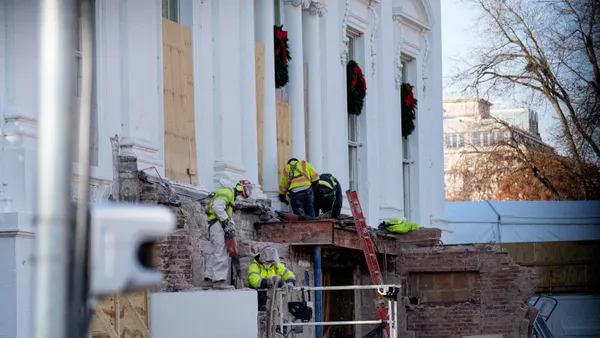Dive Summary:
- John Hopkins structural engineers are simulating earthquakes to test how seismic activity effects the integrity of mid-rise steel buildings.
- The research is the result of a three-year, $1 million project that has scientists from six universities partnered with design consultants from the steel industry.
- The results of the study are anticipated to affect building codes at a nationwide level, paving the way for improvements to the cost of cold-formed steel structures while reducing the possibility of buildings collapsing due to natural disasters.
From the article:
Using massive moving platforms and an array of sensors and cameras, the researchers are trying to find out how well a two-story building made of cold-formed steel can stand up to a lab-generated Southern California quake.
The work is taking place in the only facility in the U.S. that is capable of replicating an earthquake in three directions beneath a building measuring 50 feet long, 20 feet wide and 20 feet tall.
"This is the first time a full building of cold-formed steel framing has ever been tested in this way, so even the small things we're learning could have a huge impact," said Schafer, the Swirnow Family Scholar, professor and chair of the Department of Civil Engineering.











